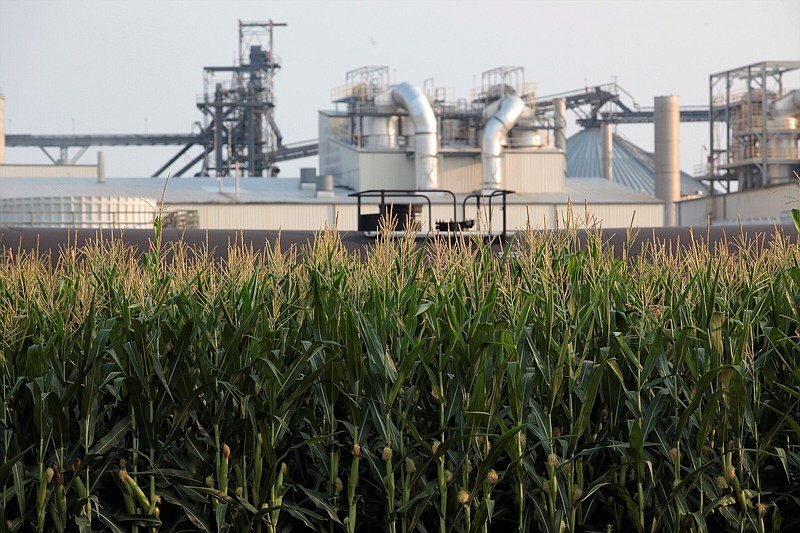The Biden administration is advancing a fuel-policy shift demanded by Midwest governors who expect it will encourage filling stations to sell higher-ethanol E15 gasoline and offer it year-round.
Under an Environmental Protection Agency proposal outlined Wednesday, the change would start by the 2024 summer driving season, with effects rippling across the fuel-supply chain, from refineries to filling stations.
While the EPA's move is positive for ethanol advocates, the proposal is a blow to supporters who called for action this summer. But refiners and pipeline operators argued they needed time to adapt, including by adding equipment to produce, store and distribute a new, lower-volatility gasoline blendstock for the region.
The EPA action would take effect in April 2024, Ben Hengst, deputy director of the EPA's Office of Transportation and Air Quality, said during an address at the industry's National Ethanol Conference, held this week in Orlando, Fla.
Some governors from corn-producing Midwestern states had asked the EPA last year to stop giving conventional E10 gasoline a partial waiver from volatility limits meant to curb air pollution. That would put E10 and E15 on the same regulatory footing in their states -- and potentially encourage more sales of the higher-ethanol variety.
Under the Clean Air Act, the EPA does not have latitude to deny the governors' request outright, though the agency can delay it in one-year increments. In response to the governors' requests, the EPA is proposing to remove the E10 waiver in Illinois, Iowa, Minnesota, Missouri, Nebraska, Ohio, South Dakota and Wisconsin.
To meet the EPA requirements, refineries would have to churn out raw, unblended gasoline that is less volatile, essentially creating a fuel specifically for the affected Midwest states. Refiners argued complying this year was infeasible, especially as summer gasoline production got underway.
But biofuel producers decried the delay, with Geoff Cooper, CEO of the Renewable Fuels Association, saying the industry is "frustrated and disappointed that the agency is proposing to kick the can on implementation until 2024."
Had the Biden administration swiftly responded to the governors' petition last year, the marketplace would have had "more than enough time to adjust and prepare for implementation this summer," Cooper said. "But instead, under pressure from the oil industry, the White House ignored a statutory deadline, sat on the proposal for months on end and slow-rolled governors who acted in good faith to ensure consumers would have the ability to choose lower-cost E15 all year long."
The American Coalition for Ethanol said in a statement the group appreciated the EPA's proposal but also argued there was no reason to wait until 2024 . The group accused the agency of delaying action because of pressure from the petroleum industry.
"The administration appears to be caving to refiner crocodile tears by kicking the can to 2024 instead," the coalition said. "This delay means consumers in conventional gasoline areas of the country will be forced to pay more at the pump this year, and retailers who want to offer lower cost E15 to their customers will be penalized."
The group urged the EPA to allow the change to take effect in 2023 for the eight Midwestern states and for the Biden administration to allow the expanded ethanol sales in other regions of the country.
Refiners and industry analysts, meanwhile, say the proposal risks isolating the Midwest's fuel supply from the rest of the country. Pipeline systems fully contained within the Midwest, and refineries primarily serving the region would generally shift to the new specification. But in-region refiners likely would have to find new markets for butane and other cheap, volatile hydrocarbons that lower the cost of gasoline.
"A new Midwest summertime gasoline blend for 2024 and subsequent years would cost more to produce and distribute, reduce overall supply and inflict unnecessary harm on consumers," said Patrick Kelly, senior director of fuels and vehicle policy at the American Fuel and Petrochemical Manufacturers association.
"The push to outlaw the current blend of summertime gasoline and replace it with a boutique blend is going to impose major costs on the Midwest's fuel supply chain and consumers," Kelly said.
The Biden administration already moved to waive E15 from summer volatility requirements last year, allowing its sale in a bid to lower gasoline prices. However, the broader E10 change is expected to have uneven effects on prices at the pump.
An analysis commissioned by a refining trade group predicts as much as 12 cents more per gallon in added industry costs to make and distribute the new fuel. Biofuel boosters say the shift would encourage more gas stations to eventually offer cheaper E15 year round, and last year, it cost nearly $1-per-gallon less than conventional E10 in some areas.
Information for this article was contributed by Scott McFetridge of The Associated Press.
